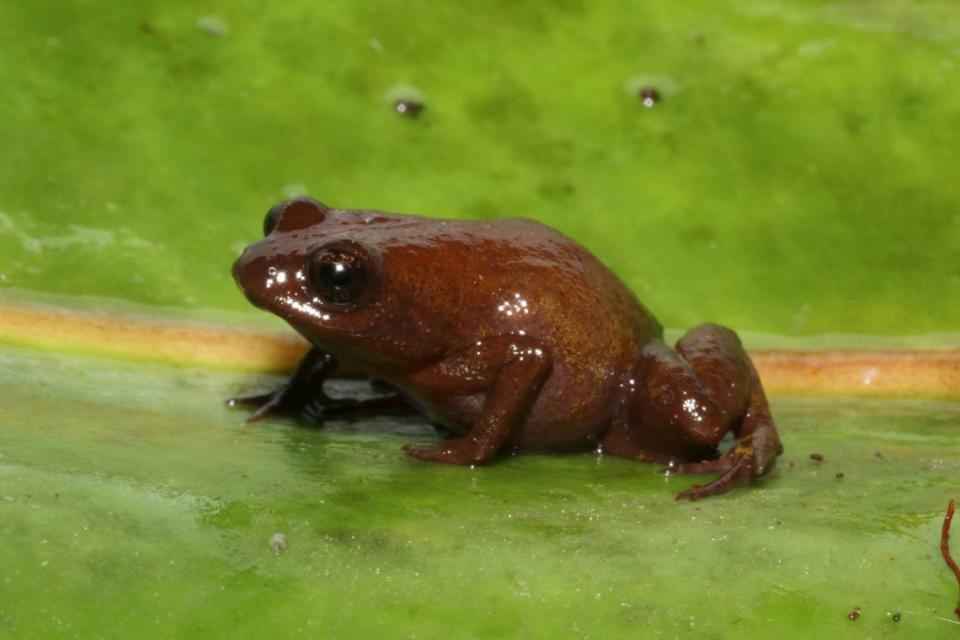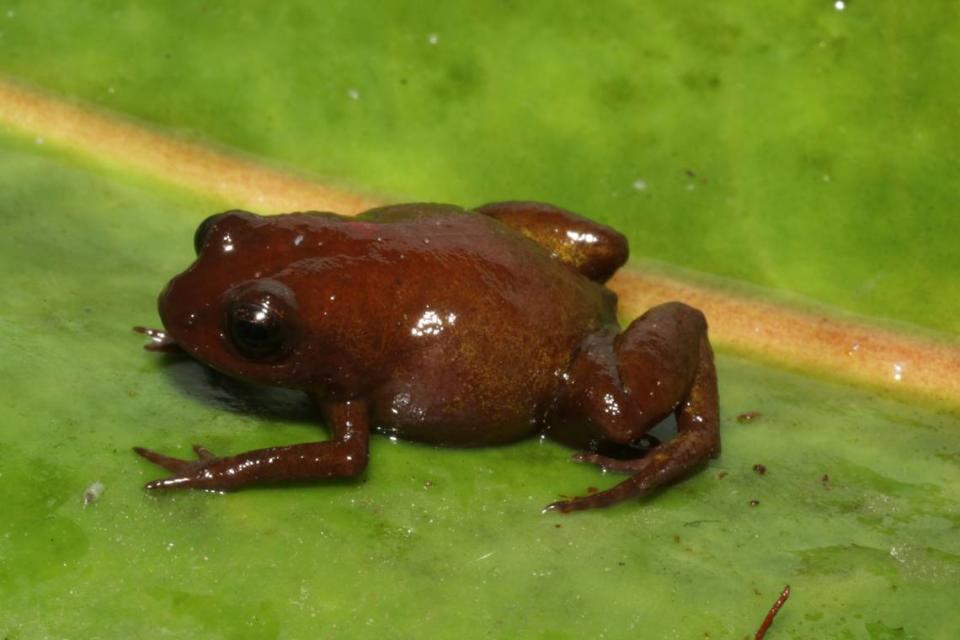Mountain creature — with ‘thin’ fingers — found lurking under rock. It’s a new species
On a remote peak in South America, some tiny creatures with “thin” fingers were living under a rock. Millennia after millennia drifted over the animals like mountain mist. And year after year, they went on like normal.
When scientists finally encountered these “relicts in the mist,” they discovered a new species.
Summiting the Neblina massif is not a beginner’s hike. The mountain is a “highly eroded sandstone plateau” with steep cliff-like sides and spans the Venezuela-Brazil border, according to a study published in the peer-reviewed journal Molecular Phylogenetics and Evolution’s February volume.
A team of researchers visited the remote mountain for several days in 2017 to survey wildlife, the study said. The researchers suspected “unique” — and possibly very old — animals were living there.
And they were right.
Researchers captured 33 frogs that didn’t match any known records. They studied the tiny animals and realized they’d discovered a “new, and yet seemingly ancient,” species: Neblinaphryne mayeri, or Mayer’s frog.

Discover more new species
Thousands of new species are found each year. Here are three of our most eye-catching stories from the past week.
→ 'Large' metallic creature — thought extinct for 100 years — rediscovered on island
→ Spiky 'blue-headed' creature found sleeping in forest of Peru
→Pregnant creature — with gold eyes — found on Australia island
Mayer’s frogs are considered “minute,” measuring less than 0.8 inches in length, researchers said. They have “short, rounded” snouts and brown eyes. Their fingers are “thin” and “short.”
Photos show the primarily brown coloring of Mayer’s frogs. Its body looks moist, and its eyes look almost black. Its sides have a few lighter yellow-brown hues.
Mayer’s frogs were mostly found in groups under rocks on steep mountain slopes, the study said. The animals were found near campsites, trails and on the summit between elevations of about 6,600 to 9,800 feet.

Researchers said they named the new species after Sinclair James Mayer, a general in the Brazilian Army who helped “provide logistical support and make the expedition to Pico da Neblina possible.”
So far, the new species has only been found on the Neblina massif, a tabletop mountain on the Venezuela-Brazil border.
The new species was identified by its body shape, skeleton and DNA, the study said. The new species had such “ancient” features that researchers classified it within a new family, Neblinaphrynidae, and new genus, Neblinaphryne.
The research team included Antoine Fouquet, Philippe Kok, Renato Sousa Recoder, Ivan Prates, Agustin Camacho, Sergio Marques-Souza, José Mario Ghellere, Roy McDiarmid and Miguel Trefaut Rodrigues.
The team also discovered another new species of frog, Caligophryne doylei, on Neblina massif.
‘Rare’ winged creature — with ‘magical red’ body — discovered as new species in China
2-foot-long creature — with distinct ‘eyelashes’ — found hunting. It’s a new species
Mountain creature — with ‘massive’ head and blue eyes — discovered as new species

